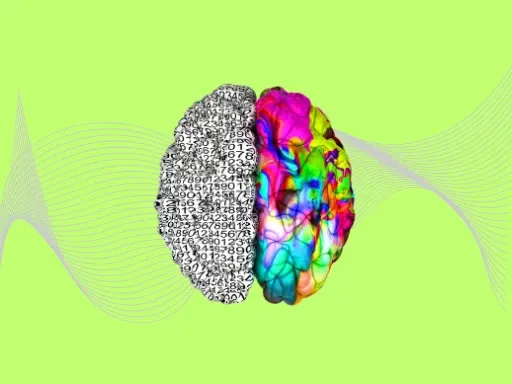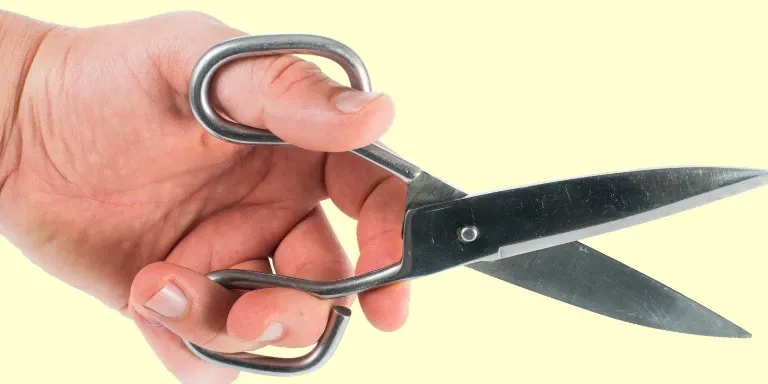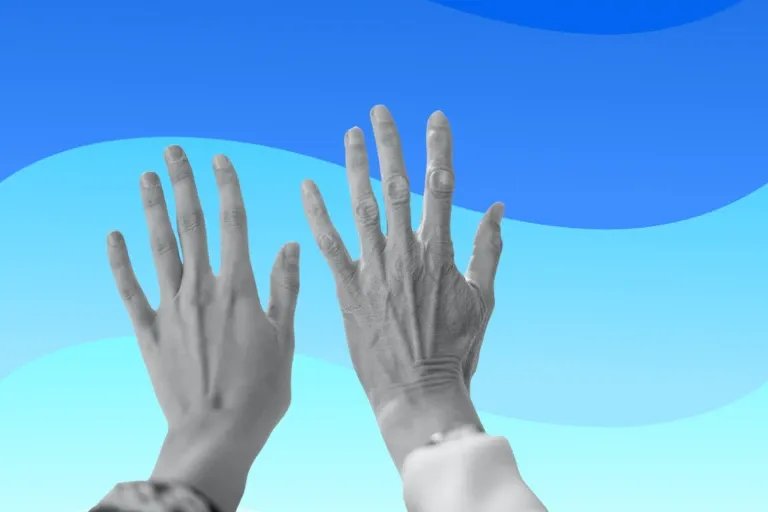Why left-handedness matters
Left-handedness is a unique and complex trait that affects approximately 10% of the world's population. While left-handed individuals face a set of challenges in a right-handed world, research has shown that left-handedness can also be an asset, linked to unique cognitive abilities, creative advantages, and certain personality traits. This definitive guide provides a comprehensive overview of left-handedness, exploring the science, history, culture, challenges, and adaptations associated with left-handedness.

Understanding left-handedness
Definition of left-handedness
Left-handedness is the tendency to use the left hand to perform manual tasks such as writing, drawing, or using tools. It is more than just a preference, as it is a complex neurological and biological trait that affects not only the hand used for activities but also other parts of the body such as the foot or the eye.
Prevalence of left-handedness
Research shows that about 10% of the world's population is left-handed. The prevalence of left-handedness varies across cultures, with left-handedness being more common in Western societies than in Asian societies.
Historical and cultural attitudes towards left-handedness
Left-handedness has historically been considered an abnormality, an affliction, or even a curse in some cultures. For instance, the Latin word "sinister" originally meant "left," "unlucky," or "evil." Many cultures have forced left-handed children to use their right hand or punished them for using their left hand. In recent years, attitudes towards left-handedness have become more positive, and left-handedness is increasingly viewed as a unique and valuable trait.
Biology and genetics of left-handedness
Left-handedness is a complex trait that results from interactions between biology and genetics. In this section, we'll explore the science behind left-handedness.
Brain lateralization and handedness

The human brain is divided into two hemispheres, and each hemisphere is associated with specific functions. Left-handedness is associated with right-hemisphere dominance, meaning that the right hemisphere of the brain is more active and plays a larger role in cognitive processing. This can affect how left-handed individuals process information and may explain why left-handedness is associated with certain cognitive and creative advantages.
Genetics of handedness
While the exact genes responsible for handedness are still unknown, there is evidence that left-handedness may have a genetic component. Studies have identified several candidate genes that may be associated with handedness, but the relationship between these genes and handedness is still unclear. Additionally, there is evidence that left-handedness tends to run in families, suggesting that genetics play a role in handedness.
Environmental factors and handedness
Environmental factors can also play a role in handedness. For example, studies have found that left-handedness is more common in twins and children born to older mothers. Some research suggests that prenatal exposure to stress or certain hormones may be associated with left-handedness. However, more research is needed to fully understand the environmental factors that contribute to left-handedness.
Left-handedness and development
Left-handedness can influence a person's development, particularly during childhood. In this section, we'll explore the impact of left-handedness on development.

Left-handedness in children
Children often begin developing hand preferences during early childhood, and left-handedness is often noticed during this time. While left-handedness is not a developmental disorder, it can sometimes present challenges in learning tasks that are traditionally taught from a right-handed perspective. These challenges might include difficulties in writing, cutting with scissors, or using tools designed for right-handed individuals.
Research has shown that left-handed children may have a higher risk for certain learning difficulties, including dyslexia and ADHD. While the reasons for these associations are not fully understood, educators and caregivers need to be aware of these potential challenges and provide appropriate support and accommodations.
At the same time, research has suggested that left-handedness may be associated with certain cognitive and creative advantages. For example, left-handed individuals may be better at divergent thinking, or the ability to come up with many different ideas for a given problem. Therefore, it is important to create an inclusive learning environment that supports and values the unique strengths and talents of left-handed children.
Left-handedness and cognitive development
Research has suggested that left-handedness may be associated with certain cognitive and creative advantages. Left-handed individuals have been found to excel in divergent thinking, the ability to generate many different ideas for a given problem. Additionally, left-handedness has been linked to higher levels of creativity, particularly in fields such as music and art.
Understanding the impact of left-handedness on development can help parents, teachers, and other caregivers provide the right support and accommodations for left-handed children. By recognizing the unique challenges and advantages of left-handedness, we can help ensure that all children have the opportunity to reach their full potential.
Left-handedness in society and culture
Left-handedness has played a role in many aspects of society and culture, from sports to art to the workplace.
Left-handedness and sports
Left-handedness can provide an advantage in sports. For example, in baseball, left-handed pitchers have a unique advantage over right-handed batters, as the ball appears to be coming from a different angle. Similarly, in tennis, left-handed players can use their dominant hand to their advantage, particularly in serving. However, left-handed athletes may also face challenges in sports where equipment and facilities are designed for right-handed players.

Below are some famous left-handed athletes who have made their mark in the sports world:
- Martina Navratilova - Tennis player
- Phil Mickelson - Golfer
- Barry Bonds - Baseball player
- Bill Russell - Basketball player
- John McEnroe - Tennis player
- Ken Griffey Jr. - Baseball player
- Rafael Nadal - Tennis player
- Steve Yzerman - Ice Hockey player
- Mark Calcavecchia - Golfer
- Gordie Howe - Ice Hockey player
Left-handedness in the workplace
Left-handedness can also play a role in the workplace. While many tools and devices are designed for right-handed use, there are a growing number of left-handed products and accommodations available to help left-handed individuals work comfortably and effectively. However, left-handed individuals may still face challenges in certain industries or job roles where tools and equipment are not designed with left-handed users in mind.
Left-handedness in art and music
Left-handedness has been associated with higher levels of creativity, particularly in fields such as art and music. Many famous artists and musicians, from Michelangelo to Jimi Hendrix, were left-handed. However, left-handed artists and musicians may face challenges in working with tools and instruments designed for right-handed users. Some left-handed individuals have even learned to play musical instruments upside down or backward to accommodate their left-handedness.

Understanding the impact of left-handedness on different areas of society and culture can help us better appreciate and celebrate the unique traits and talents of left-handed individuals. By recognizing and accommodating the needs and abilities of left-handed individuals, we can create a more inclusive and supportive world for all.
Challenges and adaptations for left-handed individuals
While left-handedness can be a unique and valuable trait, it can also present a range of challenges in everyday life.
Everyday challenges for left-handed people
Left-handed individuals often face challenges in using tools and equipment that are designed for right-handed users. For example, using right-handed scissors, can openers, and computer mice can be a challenge. Left-handed people may also struggle with writing, as many writing implements can cause smudging and discomfort for left-handed writers. Additionally, left-handed individuals may have difficulty finding left-handed products and accommodations in stores and online.

Adaptations and tools for left-handed individuals
Fortunately, there are a growing number of adaptations and tools available to help left-handed individuals navigate the challenges of a right-handed world. This includes left-handed scissors, ergonomic pens, and specially-designed computer mice. Many everyday tasks can be adapted to better suit left-handed individuals, such as placing the computer mouse on the left side of the keyboard or using a left-handed can opener. Additionally, many online stores specialize in left-handed products, making it easier for left-handed individuals to find the tools and accommodations they need, such as placing the computer mouse on the left side of the keyboard or using a left-handed can opener. Additionally, many online stores specialize in left-handed products, making it easier for left-handed individuals to find the tools and accommodations they need.
Celebrating and supporting left-handedness
Left-handedness is a unique and valuable trait that deserves to be celebrated and supported. By recognizing and accommodating the needs and abilities of left-handed individuals, we can create a more inclusive and supportive world for all.
Celebrating left-handedness
There are many ways to celebrate and appreciate left-handedness. One such way is to participate in International Left-Handers Day, which is celebrated on August 13th every year. This day was established to raise awareness of the unique experiences of left-handed individuals and to celebrate their achievements. It provides an opportunity for lefties to connect and celebrate their shared identity.
Another way to celebrate left-handedness is to recognize and appreciate the unique challenges and advantages of being left-handed. This includes advocating for more left-handed products and accommodations in schools and workplaces. It also involves acknowledging the contributions of left-handed individuals throughout history in various fields, including art, music, science, and politics. Some left-handed individuals even celebrate their left-handedness with tattoos or other creative expressions.
By celebrating left-handedness, we can create a more inclusive and supportive world for left-handed individuals. It provides an opportunity to raise awareness of the unique experiences and contributions of left-handed individuals and to foster a sense of community and pride among lefties.
Supporting left-handed individuals
Supporting left-handed individuals can involve a range of actions, from providing left-handed tools and accommodations to advocating for left-handed individuals in the workplace and society. This includes encouraging schools and teachers to recognize and accommodate the needs of left-handed students, as well as pushing for more left-handed products and accommodations in stores and online.
Conclusion
Left-handedness is a complex and fascinating trait that affects millions of people around the world. While left-handed individuals may face a range of challenges in a right-handed world, left-handedness is also associated with unique cognitive and creative advantages. By understanding and celebrating left-handedness, we can create a more inclusive and supportive world for all.
Frequently asked questions (FAQ)
Why is left-handedness rare?
While the exact reason is unknown, studies suggest it may be due to a combination of genetic and environmental factors.
What does it mean if you are left-handed?
Being left-handed simply means that you prefer to use your left hand for tasks such as writing or throwing.
Do left-handers think differently?
Some studies suggest that left-handed individuals may process information differently than right-handed individuals, but there is no clear evidence to support this idea.
Is it good to be left-handed?
There are both advantages and disadvantages to being left-handed. For example, left-handed individuals may have an advantage in sports such as baseball or tennis, but they may also face challenges in a world designed for right-handed people.
Who is the most famous lefty?
Many famous individuals, including Leonardo da Vinci, Barack Obama, and Oprah Winfrey, are left-handed.
What traits do left-handed people have?
Left-handed individuals are not inherently different from right-handed individuals in terms of personality traits or cognitive abilities.
Can a child be left-handed if both parents are right-handed?
Yes, a child can be left-handed even if both parents are right-handed. Left-handedness can be influenced by both genetic and environmental factors and is not always predictable.
Further reading
- "The Left Stuff: How the Left-Handed Have Survived and Thrived in a Right-Handed World" by Melissa Roth
- "Left-Handed: A Memoir of Seven Fingers, Ten Toes, and One Man's Journey to Leave the Left Side Behind" by Scott D. Southard
- "Left-Handed Calligraphy" by Vance Studley
- "Sinister Syndrome: How Left-Handed Behavior is Changing Society" by Peter S. Wells
- "Left-Handed: The Origins & Consequences of Being Left-Handed" by Howard I. Kushner
Works cited
- Annett, M. (1992). Handedness and Brain Asymmetry: The Right Shift Theory. Psychology Press.
- Corballis, M. C. (1991). The Lopsided Ape: Evolution of the Generative Mind. Oxford University Press.
- Coren, S. (1992). The Left-Hander Syndrome: The Causes and Consequences of Left-Handedness. The Free Press.
- Geschwind, N., & Galaburda, A. M. (1985). Cerebral Lateralization: Biological Mechanisms, Associations, and Pathology. MIT Press.
- Halpern, D. F., & Coren, S. (1991). Left-handedness: A marker for decreased survival fitness. Psychological Bulletin, 109(1), 90–106.
- McManus, I. C. (2019). The development and decline of left-handedness: Longitudinal studies from pregnancy to age 60. Psychology Press.
- Peters, M. (2020). Handedness and Brain Asymmetry: The Right Shift Theory. In Oxford Research Encyclopedia of Psychology. Oxford University Press.





